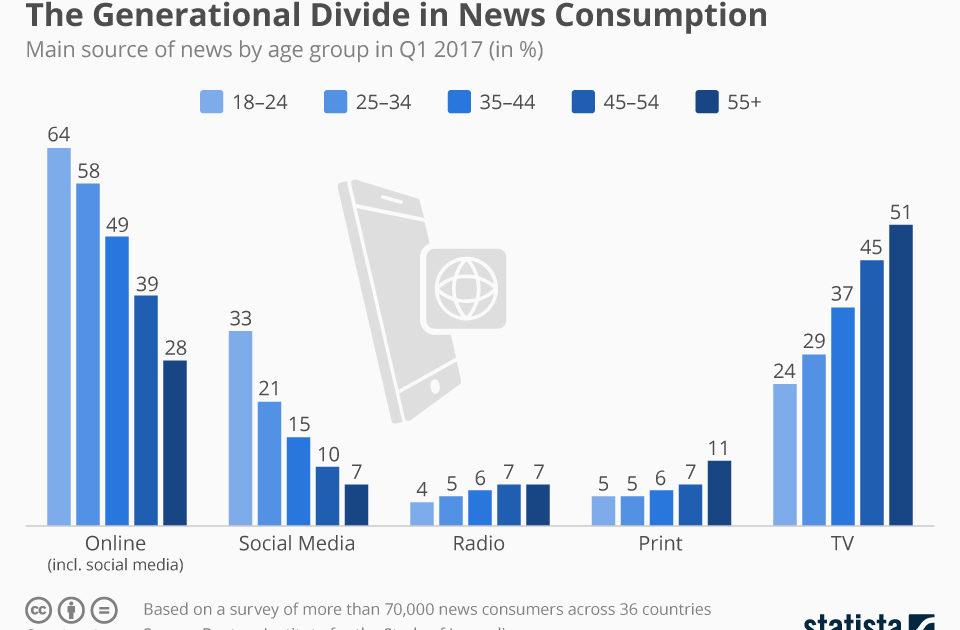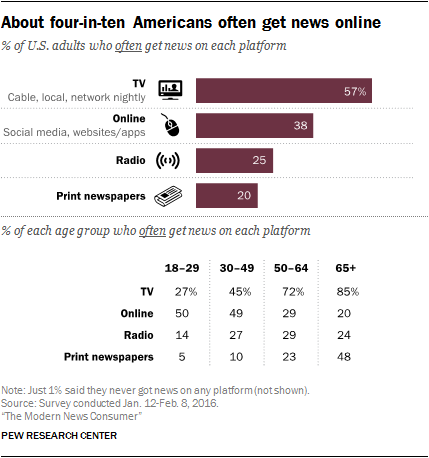The Generational Divide in Todays News Consumption
Some people like to stay on top of the news cycle throughout the day by checking Twitter, Facebook, and their favorite news websites. Others prefer to be served to select the day’s important happenings by the evening news on TV. Whether you prefer one or the other may come down to your age and what you have become accustomed to in the past.
According to data published in the Reuters Institute’s Digital News Report, there is a generational divide regarding news consumption. While most of those who grew up with the internet see it as their most important news source, those who relied on the TV news for a daily news fix for decades still tend to prefer television over online news sources.
Very few people still rely on print publications as their primary news source, indicating that the role of newspapers has shifted from conveyor to commentator of news.
Another study late last year found that Americans express a clear preference for getting their news on a screen – though which screen varies. TV remains the dominant screen, followed by digital. Still, TV news use is dramatically lower among younger adults, suggesting further shake-ups to come.
- Compared to print, nearly twice as many adults (38%) often get news online, either from news websites/apps (28%), on social media (18%), or both. (81% of adults ever get news on these online platforms.)
- Still, TV continues to be the most widely used news platform; 57% of U.S. adults often get TV-based news, either from local TV (46%), cable (31%), network (30%), or some combination of the three. This same pattern emerges when people are asked which platform they prefer – TV sits at the top, followed by the web, with radio and print trailing behind.
- But demographics speak to the fragility behind those TV numbers. While solid majorities of both those ages 50-64 (72%) and those 65+ (85%) often get news on TV, far smaller shares of younger adults do so (45% of those 30-49 and 27% of those 18-29). Alternatively, the two younger groups of adults are much more likely than older adults to turn to online platforms for news – 50% of 18- to 29-year-olds and 49% of those ages 30-49 often do so. TV’s staying power overprint is bolstered by the fact that Americans who prefer to watch news still choose TV, while most of those who like to read the news have migrated online.






